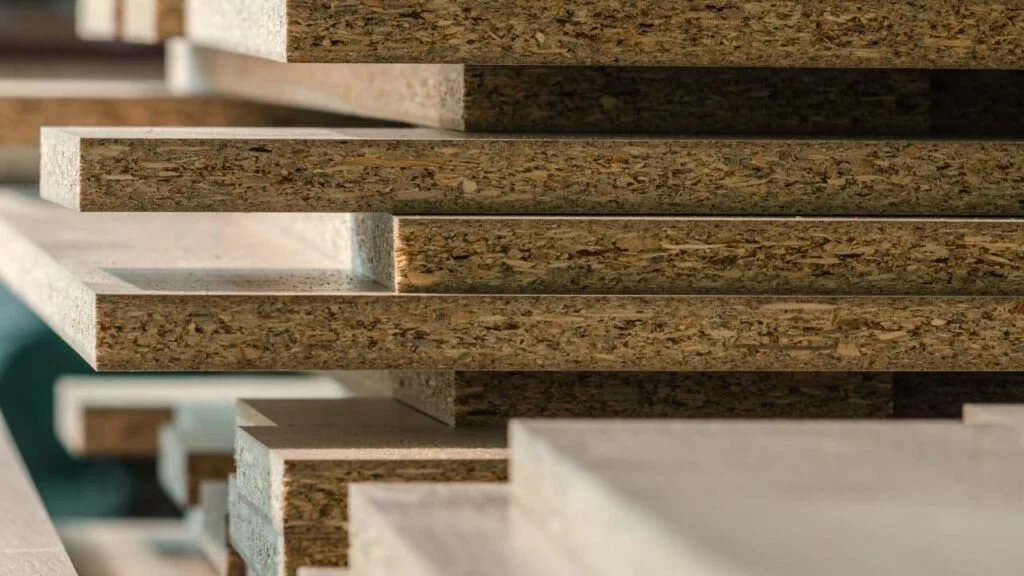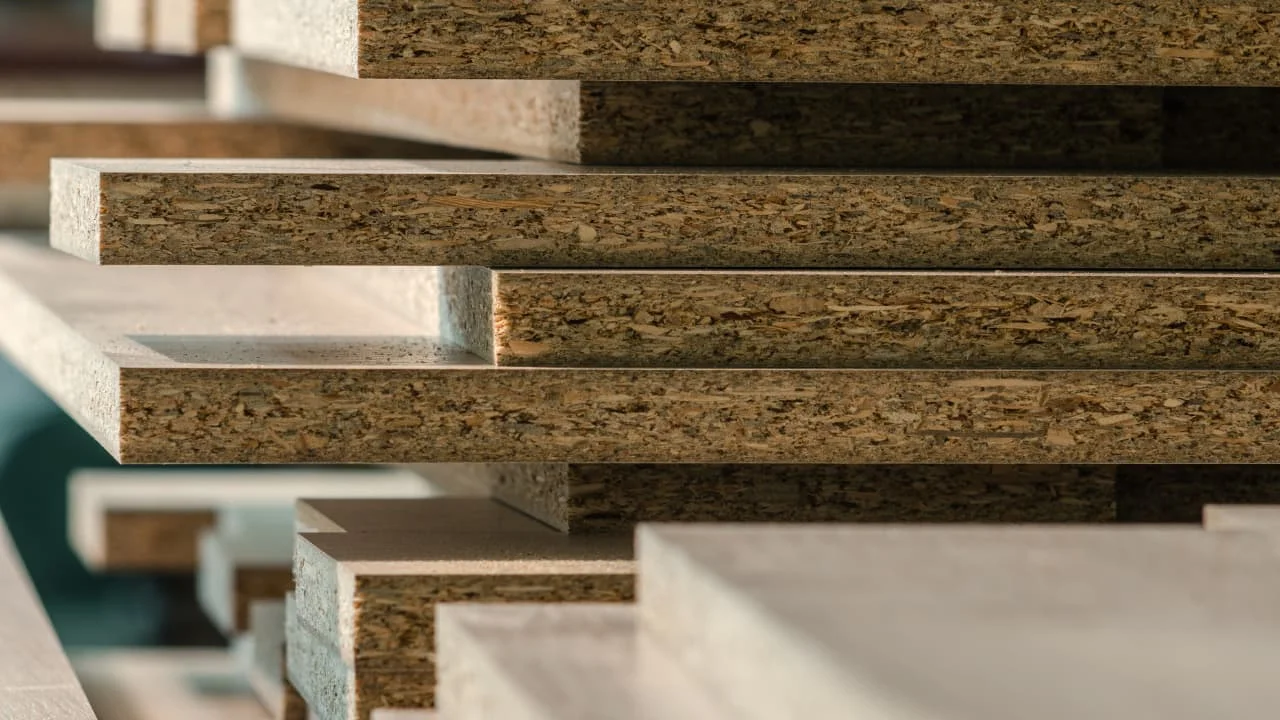Have you ever looked at a piece of particle board furniture and wondered if it could be transformed into something more visually appealing? You’re not alone! Many people have questions about painting particle board furniture, a common material found in cabinets, shelving units, and other forms of engineered wood furniture.
In this comprehensive guide, we will answer all your burning questions — Can you paint particle board? How to prepare it for painting? What type of paint works best on this unique surface? Read on as we unravel the mysteries surrounding particle board painting and offer tips to help you achieve a flawless finish.
Key Takeaways 💭
- Yes, you can paint particle board furniture with proper preparation and technique.
- Before painting, it’s important to clean the surface thoroughly with soap and water and sand it to ensure that the primer and paint adhere properly.
- Choosing high-quality acrylic or latex-based paints for particle board surfaces paired with oil-based primers is recommended for a durable finish.
- Allowing ample time for drying and curing is essential to achieve long-lasting results.
Table of Contents
Can You Paint Particle Board?

Absolutely! Particle board, also known as engineered wood or chipboard, is solid wood that can be successfully painted to give your furniture or cabinets a fresh look.
One of the main reasons why people opt for painting particle board is to transform inexpensive or worn-out furniture pieces into attractive and durable items that better match their home décor.
For instance, you might have an old bookshelf made from particle board that no longer matches your room’s style.
Understanding Particle Board And Painting It
Can you paint particle board? Yes, you can! But before you start painting, it’s important to understand what particle board is. Particle board or chipboard is an engineered wood product made from wood chips and resin.
When painting particle board, there are several factors to consider such as the type of paint and primer to use and the condition of the surface.
Factors To Consider
Before painting particle board, there are several factors that you’ll need to consider. First and foremost is the quality of the particle board itself. Lower-quality particle board can be more prone to warping or swelling when exposed to water-based paints or excessive moisture during the painting process.
Another important factor is the type of paint that you plan on using. High-quality acrylic paint is recommended for painting a laminated particle board as it will provide a durable finish that won’t chip or flake easily with wear and tear.
It’s also important to use a primer specifically designed for use on engineered wood surfaces like particleboard in order to help the paint adhere properly and last longer.
Key Steps To Successfully Paint Particle Board
To successfully paint particle board with spray paint, there are a few important key steps that you need to follow. Firstly, it is crucial to prepare the surface of the particle board before painting it.
This involves thorough cleaning and sanding to remove any dirt or debris and create a smooth surface for painting.
Choosing the right type of paint is also important when painting your particle board cabinets. It’s recommended to use acrylic paint as this adheres well to engineered woods like particle boards and gives a long-lasting finish.
When applying paint coats on top of your primer make sure they dry completely before adding another coat or else you might end up with blotches or uneven patches in your final product.
By following these simple yet crucial key steps outlined above, you can ensure that your next project involving painting particleboard furniture or cabinets will be successful every time!
Preparing Particle Board For Painting
Before painting the particle board, it’s important to clean the surface thoroughly with soap and water. Sanding is also necessary to ensure that the primer and paint adhere properly.
Use fine-grit sandpaper to smooth out any rough patches or imperfections on the surface. Once sanded, apply a second coat of primer specifically designed for particle board to prevent any bleeding through knots or stains.
Cleaning And Sanding
Before you can paint particle board furniture or cabinets, it’s essential to clean and sand the surface thoroughly. Cleaning helps to remove dirt, grime, and other contaminants that may affect the paint adhesion.
Next up is sanding! Sanding creates a rough surface that helps the primer adhere better. Use fine-grit sandpaper (120-220 grit) for best results and make sure to wear a mask to avoid inhaling any dust particles.
Once sanded, use a damp cloth again to wipe off any remaining debris before applying primer.
Applying Primer
To ensure an even and smooth finish when painting particle board, it is essential to apply a primer before the actual paint. A good quality primer will help to seal the surface of the particle board and prepare it for the paint.
When choosing a primer for particle board, it is important to consider its compatibility with your chosen type of paint. For example, if you plan on using oil-based to spray paint particle board, be sure to choose an oil-based primer as well.
Similarly, sanding particle board, if you prefer water-based or latex paints, look for primers specially made for such paints. Applying one or two coats of primer should suffice depending on how porous your particle board is – always follow the manufacturer’s instructions.
Tips And Techniques For Painting Particle Board
Choose high-quality paint and primer for particle board to achieve long-lasting results. Apply thin coats of paint using lint-free materials, and allow proper drying and curing time before adding additional coats or using the furniture.
Choosing The Right Paint And Primer
Choosing the right paint and primer is crucial when painting particle board. It’s important to select a high-quality acrylic or latex-based paint that adheres well to engineered wood surfaces.
Satin, semi-gloss, or gloss finishes are great options for achieving a more durable surface on furniture or cabinets. When selecting primer, it’s best to opt for an oil-based one as this will help fill in any imperfections on the surface of the particle board and create an even base for painting.
For example, if you’re refurbishing old particle board shelves with a modern feel in mind, you might go for bright white semi-gloss paint paired with black hardware accents.
Or if you want to restore antique MDF cabinets with characterful charm, opting for a matte finish pale pastel green paired with vintage brass knobs can instantly transform them into charming centerpieces of your room.
Applying Paint Coats
After you have applied primer and allowed it to dry completely, it’s time to apply paint coats. When choosing paint types for particle board, consider those designed with resins or acrylics that stick well onto particleboard surfaces.
Apply two in one primer or three light coats of paint, allowing each coat to dry completely before applying the next one.
It is also essential to use lint-free materials for painting tasks such as foam paint roller, covers and synthetic bristle brushes because they provide a smoother finish while preventing hairs from sticking on the surface during application.
Finally, give your painted piece ample curing time recommended by the manufacturer before putting it into use or exposing it to heavy traffic.
Drying And Curing Time
Once you’ve successfully painted your particle board, it’s important to consider the drying and curing time. Drying time is how long it takes for the paint to become completely dry even to the touch and can vary depending on factors such as humidity and temperature.
Curing time refers to how long it takes for the paint to fully harden and create a strong bond with the surface. This process can take several days or even weeks, so be patient before using or moving any painted particle board furniture.
Additionally, make sure you avoid placing heavy objects on top of freshly painted surfaces until fully cured as this could cause damage or leave imprints in the wet paint.
How To Refurbish Particle Board Furniture With Paint
Refurbishing your particle board furniture with paint can be an excellent way to spruce up your space without breaking the bank. The first step is to clean and sand the surface of the particle board to ensure any dirt or debris is removed before you begin painting it.
Next, apply a primer specifically designed for use on particle board surfaces.
When it comes to choosing the right paint, go for something that’s durable and long-lasting, such as acrylic paint. Apply multiple coats of paint thinly, allowing each layer to dry completely before applying another thin layer over another one.
Final Thoughts On Painting Particle Board
In conclusion, painting particle board is a cost-effective way to give it an updated and refreshed look. It’s important to properly prepare the surface with cleaning and sanding before applying primer and paint.
Choosing high-quality materials like acrylic paint can result in a long-lasting finish. However, it’s important to note that particle board may not be able to withstand heavy use or moisture over time, so it’s crucial to consider the durability of the material before deciding whether or not to paint it.
FAQs:
Common Questions About Painting Particle Board
Many people have questions about painting particle board.
By answering these common questions about painting particle boards, you’ll be prepared with crucial information needed to get started with your project!
Can you paint particleboard furniture without sanding it first?
Sandpaper is essential to clean the surface of particleboard before painting because it removes any unwanted debris or dirt that may hinder the bonding of paint on the board’s surface. Hence, you should not skip sanding if you want a smooth and professional finish.
What kind of paint should I use on the particle board?
When selecting a type of paint for particle board, consider using an oil-based primer to seal the wood particles and its porous nature effectively. Then apply acrylic or latex-based paints to prevent stains or moisture damage from seeping into the wood.
How can I repair damaged areas on my particle board before painting?
To fix damages in your particle board before painting, fill holes with wood filler then smooth out surfaces with fine-grit sandpaper after drying for 24 hours.
Will multiple coats improve durability when painting particle board?
Applying multiple coats will enhance durability and create an even color that lasts longer since more layers increase the thickness and coverage over time. This helps protect against scratches, scuffs, chipping as well as other forms of wear and tear associated with everyday use of painted furniture items made from this material while also making your project last longer due to greater protection against environmental factors such as sunlight exposure which often fades colors over time especially if they are in direct line-of-sight from windows/doors, etc

